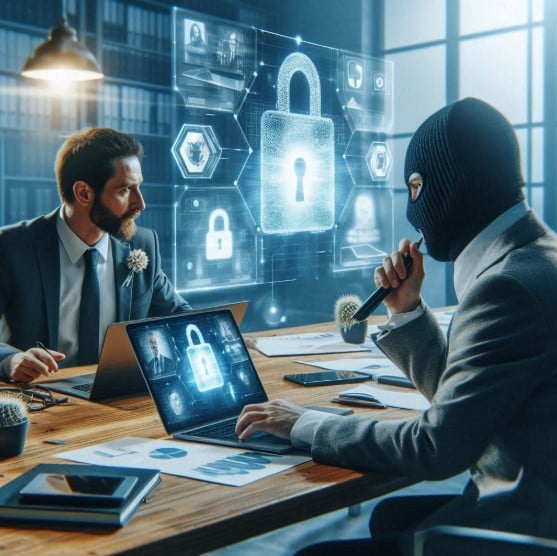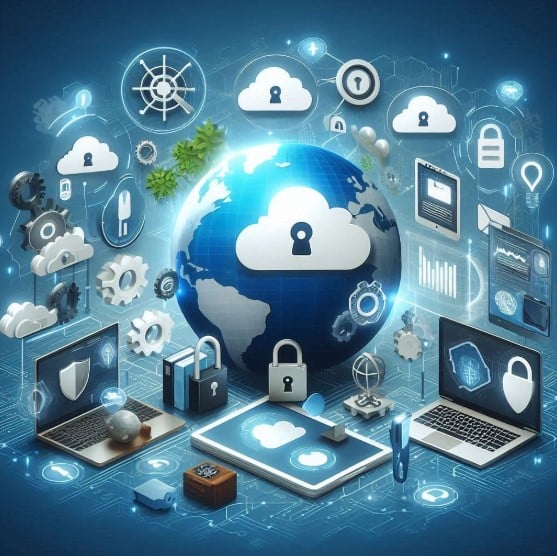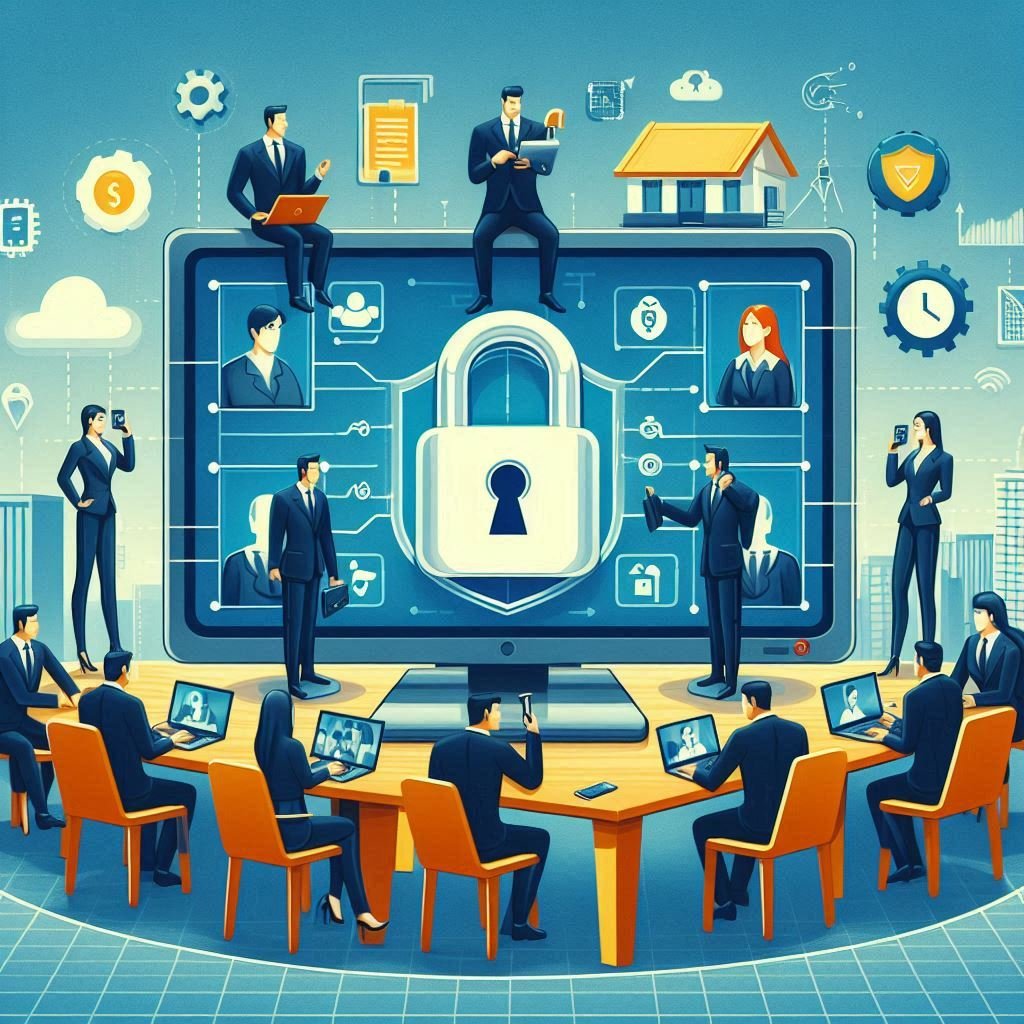Introduction
For small and medium-sized businesses (SMEs), client communications are the heart of building strong customer relationships. Whether it’s discussing projects, providing customer support, or sharing updates on products or services, effective communication ensures clients feel valued and informed. In recent years, video conferencing tools have become the go-to method for creating real-time, face-to-face meetings without the need for physical travel.
However, as businesses adopt video calls and other communication tools, one issue often gets overlooked—security. While technology allows businesses to communicate and collaborate more easily, failing to protect sensitive client information can harm your business in the long term.
According to a survey, 78% of corporate companies now utilise video conferencing to enhance team collaboration, yet 97% of respondents have serious concerns about the privacy and security of their conferencing data (Zoapi, 2024).
This blog explores why SMEs must make protecting client communications a priority, the risks of not doing so, and how video conferencing software can help you communicate effectively while safeguarding your business.
The Risks of Poorly Protected Client Communications

When businesses neglect secure communication channels, they risk exposing private data and damaging client relationships. Here’s why it matters:
1. Risk to Client Information
Each time you share information during a video meeting—whether it’s a project update or financial details—you trust the system to keep the data private. Weak conferencing tools can leave this data open to theft or misuse.
2. Trust Is Easily Broken
A big part of effective client communication is showing clients that you can be trusted with their information. If a security breach occurs, even accidentally, it can erode trust and push clients to work with competitors who use safer communication tools.
3. Interruption of Business Operations
Imagine your video meetings being disrupted by unauthorised attendees or hackers. This not only disturbs your workflow but also signals to clients that your business isn’t reliable in handling customer experience.
The global cost of cyberattacks is projected to reach $9.5 trillion in 2024, driven largely by threats such as ransomware and phishing. This statistic highlights the financial stakes for businesses, including SMEs, that may experience severe repercussions from inadequate security practices in video conferencing (Guide, 2024).
Common Security Issues with Video Conferencing
Not all video conferencing tools are created equally. Some come with vulnerabilities that could compromise your customer relationships.
1. Weak or No Encryption
Encryption is like a digital lock that keeps your calls and data private. Without strong encryption, the information exchanged during a team meeting or video conference can be intercepted by outsiders.
2. Unauthorised Access
Sharing meeting links without proper authentication can lead to unauthorised users joining your sessions. This not only interrupts the flow of effective communication but also puts sensitive client communications at risk.
3. Insecure File Sharing
Modern conferencing tools allow you to share documents and files during video calls, but insecure platforms might expose these files to external threats, leading to data leaks or tampering.
Challenges SMEs Face in Securing Client Communications
For many SMEs, ensuring safe communication channels feels overwhelming. Here are some of the common hurdles:
1. Budget Constraints
High-quality video conferencing software with advanced security features often comes at a higher price. SMEs working with limited budgets may hesitate to invest, seeing it as a luxury rather than a necessity.
2. Lack of Technical Knowledge
Many SMEs are unaware of how to choose video conferencing tools that prioritise privacy or may not know how to set up these features. This gap can leave businesses vulnerable to cyberattacks.
3. Complexity of Features
Some communication tools come with a range of high-level security features that may feel overly technical or hard to use for non-technical staff.
Why Security Is a Long-Term Investment
While implementing robust communication channels might feel like an extra effort, neglecting them can result in serious consequences:
1. Legal and Financial Repercussions
Data breaches can lead to hefty fines and lawsuits, especially when sensitive client information is exposed. For an SME, this could mean significant financial strain.
2. Loss of Trust
Once clients feel their information isn’t safe, it’s hard to rebuild trust. Secure client communications show clients you care about their safety, which in turn builds trust and strengthens relationships.
3. Damage to Reputation
Word spreads quickly when businesses fail to protect their clients. A single incident can tarnish your reputation, making it harder to attract new clients or retain existing ones.
4. Impact on Team Productivity
Security isn’t just about external communications; it also protects team members. When project management software, collaboration tools, or video calls are interrupted by unauthorised access, your team’s ability to assign tasks and complete work is hindered.
Read more: Secure Video Conferencing and Encryption is the Future
How SMEs Can Secure Their Client Communications

By taking a proactive approach, SMEs can overcome security challenges and ensure effective client communication. Here’s how:
1. Choose the Right Tools
Select video conferencing software with strong encryption and multi-factor authentication. Platforms like Microsoft Teams offer features to keep both video meetings and files safe while maintaining ease of use.
2. Train Your Team Members
Educate your staff on best practices for communicating effectively and securely. Simple steps, like avoiding sharing links via public text messages, can make a big difference in protecting your communication channels.
3. Use Built-In Features Wisely
Modern conferencing tools come with various features, such as password-protected meetings and file-sharing limits. These tools are there to help, so take full advantage of them.
4. Monitor and Update Regularly
Keep your video conferencing tools up to date. Developers frequently release security patches to protect users from emerging threats.
Why Security Is Non-Negotiable
In today’s business environment, clients expect more than just good service—they expect their information to be handled responsibly. SMEs need to show they are capable of handling high-level client concerns by choosing safe and reliable communication channels.
Here’s why prioritising security pays off:
-
Builds Trust: Clients feel confident sharing information during video meetings when they know their data is protected.
-
Protects Your Brand: A secure system protects both your clients and your reputation in the long term.
-
Strengthens Team Collaboration: Secure tools allow your team members to work without worrying about disruptions, improving efficiency in project management and day-to-day operations.
Read more: Are Offices the Same in the Era of Remote Collaboration?
Conclusion
As SMEs continue to embrace remote work and video conferencing for effective client communication, security must remain a key focus. Protecting sensitive client information builds trust, supports your communication strategy, and keeps your business safe from the legal, financial, and reputational risks of a breach.
By investing in reliable video conferencing tools and educating your staff, you can ensure your business is prepared to handle client interactions at a professional, secure level. After all, strong client communications aren’t just about phone calls or face-to-face meetings—they’re about keeping your clients confident in your ability to protect their interests, now and in the future.
Continue reading: Why Your Business Needs Reliable Video Conferencing
References
-
Guide, S. (2024, September 11). 2024’s Cyber Security Statistics: Updated Trends & Data - Keepnet. Keepnet Labs. Retrieved November, 2024.
-
Zoapi. (2024, May 6). Top 10 Security Practices to Implement in Video Conferencing in 2024. Zoapi. Retrieved November, 2024.
